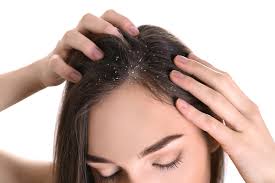How to Deal With Beard Dandruff

Dandruff on your scalp is something that you likely know about already – many people deal with dandruff, and there are plenty of shampoos and other products to help you with scalp dandruff. However, did you know that you can also get dandruff underneath your beard? While beard care is certainly important, dandruff coming from your beard may need slightly more targeted treatment. Here’s what you need to know about managing beard dandruff.
What Is Beard Dandruff?
Beard dandruff is the same as dandruff that happens on your scalp. You’ll know that it’s dandruff because your skin underneath your beard may be red, it might be very itchy, and you’ll see regular white flakes in your beard. A few white flakes here and there don’t necessarily indicate dandruff, as dry skin can simply cause your skin to shed, but with dandruff, the flakes will be large, very greasy, and a constant problem.
Why Does Beard Dandruff Happen?
Beard dandruff isn’t just a skin problem, but instead is typically believed to be a fungal issue. It’s caused by a fungus that grows well in oil-rich environments, which is why you might find it on your scalp or beard, but you likely won’t find it on your cheeks. With dandruff, the fungus creates a substance that irritates the skin, causing it to regenerate new skin cells too quickly, resulting in those flakes needing to come off more frequently.
What Are Some Ways I Can Handle Beard Dandruff?
First of all, it’s a good idea to exfoliate the skin under your beard. Because beard hair can be so coarse and dense, many people don’t exfoliate the skin underneath the beard as much as they should, which can cause excess dead skin buildup. Use a beard brush to do it without irritating the skin. Then, use a shampoo with antifungal properties, like a dandruff shampoo or a tea tree oil shampoo. Restore moisture with a high-quality beard oil, so you don’t accidentally strip the necessary moisture and make your dandruff worse. You can use an Ulta coupon to purchase these products at a better price and more easily restore your beard to the proper state.
When to Head to a Dermatologist
There are three things to consider when deciding if you should go to a dermatologist for dandruff:
- Does the skin actually hurt, or is it bleeding at all?
- Have you noticed that the living skin is peeling?
- Has this been going on longer than 2-3 weeks after trying to manage the problem with over-the-counter products?
If you notice any bleeding or serious pain, always see a dermatologist. This can be an indication that there’s something harmful happening to your skin, and it’s critical that you talk to a doctor about it instead of trying to manage it yourself.
Conclusion
Beard dandruff is a problem that can be frustrating to deal with on your own, but easier than you might think to deal with when you have a road map ahead. With these tips, you’ll be able to deal easily with beard dandruff. Additionally, a dermatologist can recommend steps forward if you’ve tried them and haven’t been able to fix the problem.
